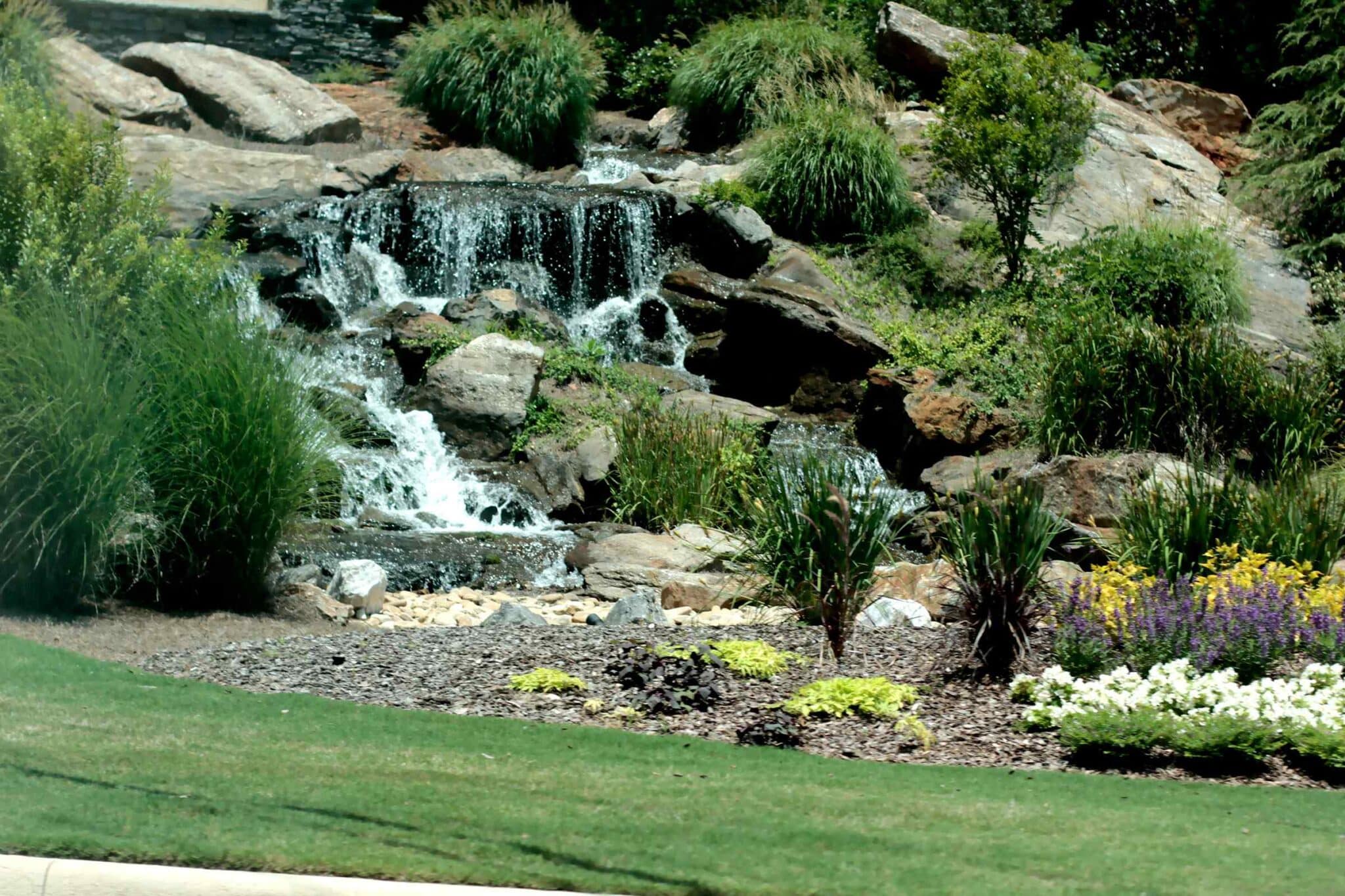
Landscaping your yard with garden beds can create curb appeal by appealing to the eyes aesthetically. However, installing a garden of flowers and shrubs is not as simple as digging up some dirt and tossing random seeds into a hole. We here at ALD would love to help you create the right look, figure out the best layout, and assist you in selecting the right shrubs and flowers for your garden.
There are benefits to each kind of bed. For instance, an in-ground bed is often your most economical choice. You can use the existing soil in your yard, and you do not have to invest as much time and money in starting your garden. Unfortunately, the soil compaction may prove problematic.
A raised bed offers a longer growing season, soil compaction prevention, improved drainage, and you spend less time weeding and maintaining it. Of course, you will have to spend plenty of time creating the raised bed. You will also have to spend money on soil and any wood or masonry you use to edge the bed.
When it comes to selecting a garden bed for your yard, you have several options. The following are some choices you might like:

In-ground bed
Raised bed
Island bed
Border bed
Formal Bed
Informal bed
No matter the garden bed you choose, you should make sure you care for it properly. Therefore, you should be able to reach all areas of the garden for weeding and watering. Unless you plan on adding a stepping stone path to your garden bed, you should be able to reach the center of the garden.
A total width of 4 feet allows you to reach to the center of the garden bed from either side. If you plan on having a bed wider than 4 feet, create openings or footpaths that allow you to water and weed the garden. Also, try to keep your garden bed proportionately sized. For instance, if you have a long bed, you will want to give it more width.
Make sure your layer of mulch is around 2 inches thick. The mulch helps maintain moisture levels in the soil, and it prevents the growth of weeds. You should check the level of moisture in your soil twice a week. The first six inches of soil should feel moist, but not overly watered or soggy.
You should also weed the garden bed once a week, even with a layer of mulch. If you do not weed the garden regularly, weeds will grow, soak up the moisture in your garden, and kill off your plants and shrubs. Weeds soak up nutrients, too, which chokes out your flowers and leaves them vulnerable to diseases.
You should mulch your garden not longer after planting your flowers and shrubs. Recommended mulch includes:
Straw
Wood chips
Chopped up leaves
Grass clippings
Compost

The type of bed you choose will determine your best design tips. For instance, a border garden bed will need an anchor. A border garden bed is usually a long, narrow bed situated along the front of a house or a fence. The house or fence typically serves as the garden’s anchor or backdrop since the flower bed is only viewable from one side.
You can view an island bed from all sides, which means you do not need an anchor. However, people will often opt to add a centralized anchor to an island garden bed. That is not to say that the centralized anchor must sit in the center of the garden. You can opt to place the anchor off to one side to create an asymmetrical appearance. An island bed anchor may include a statue, bench, or even a tree.
When designing your garden, do not get caught up in a specific type of flower. Instead, you should incorporate ornamental grasses, perennials, seasonal bulbs, and annuals. Splashes of color and different plants will give your garden a variety of texture that is appealing to the eye.
If you are designing a border garden, make sure you keep taller plants and the back and shorter ones toward the front. Also, try to group your plantings. For instance, plant at least 3 of the same type of plant together in a group. For smaller plants, try keeping them in groups of 7 or more.
If you have a larger plant in your garden, such a large shrub, you can plant it by itself rather than in a group. In fact, you should avoid planting very large shrubs together in groups of 3 or more. For an island bed, keep your taller plants in the middle and your smaller plants toward the outer edge.
Finally, decide if you want a formal or an informal design for your garden bed. A formal garden conforms to distinct shapes, such as circles, squares, or rectangles. An informal garden embraces a free form, which means there is no distinct shape. They can have curved, flowing lines.
Businesses and botanical gardens or parks often opt for a formal garden whereas homeowners often choose an informal garden. Also, formal garden use carefully selected plants with distinct colors whereas the colors and plantings in an informal garden are subtler and not so carefully planned.
Once you know the type of garden you want and how to carefully maintain it, you should make some final decisions. Where exactly do you want your garden? Do you want it surrounding trees on your property? Do you want it to border the front of your home along a porch or deck?
ALD would be more than happy to help you create your garden from start to finish. Our expert knowledge can ensure that your garden bed complements your home. When planting a garden, you need to make sure it sits in the right location, so it receives plenty of sunlight. Fortunately, we can help you with your garden location as well as every other aspect that goes into garden planning.